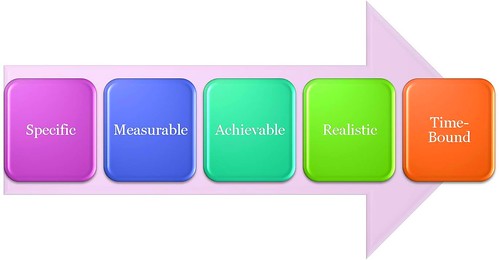Most of us are fully aware that goal setting is essential part of achieving things in life and during this time of the year many of us have already created the financial, family, health and relationship goals we want to achieve during 2015. In tennis this is no different. Whether you are a beginner or advanced tennis player you need to create goals which will propel you to improve in specific areas. It is proven that setting the right goals in tennis will enhance performance and improve motivation.
One of the important things to understand is that there are different type of goals that you can set. There are outcome, performance and process goals. Outcome goals are more general and would be for example wanting to be the best player on your varsity team or winning your regional singles tournament. In order to reach your outcome goals you need to set performance and process goals. A performance goal will refer to your actual performance as a player and include things like increasing your 1st serve percentage or reducing your unforced errors in a match by 20%. This type of goal can be measured and progress towards the goal can be tracked. The last type of goal – process – refers to how a player will improve a particular stroke. The process involved in creating and perfecting that stroke will be the focus.
The other essential part to understand is that goals need to be SMART goals. What does this mean? It means the goals must be Specific, Measurable, Achievable, Realistic and be constrained to a certain Time or Time Bounded. Creating this type of goal will maximize the probability that you will achieve the goal as long as you also create a workable action plan.
Also keep in mind that a goal is categorized either as a short term goal or a long term goal. A short term goal can take days, weeks, or a couple of months to accomplish while long term goals are those which will usually take 6 months or more to accomplish. Don’t just set long term goals. It is important to maintain motivation by setting short term goals which one can see progress in as a stepping stone to your long term goals.

Now let’s look at some examples. Let’s select a short term goal. For example, you are looking to be able to hit the forehand volley down the line consistently, which would be hitting 7-8 shots in out of ten during a rally. And you would like to achieve this improvement within the next 3 months. Choose a set of actions which are easy enough to follow on a continuing basis. A) Plan to set a side 30-45 minutes at least once a week to work on this stroke. The more time you dedicate to this the quicker your improvement of course but I know we all have time constraints and the important thing is that you stick to your plan and make it reasonable for you to follow. If you cannot find a hitting partner you can look at renting a ball machine from your local tennis club; for a 30 min rental pricing is usually very reasonable. B) If possible take a couple of private classes with a local tennis pro just to make sure you are using the right grip and you are using the proper technique. Sometimes all it takes is a little tweak of the technique for you to attain consistency and power. C) Determine to study videos available readily on You Tube that show pros hitting their forehand down the line to watch their technique in action. The mind learns visually also so the more you see something like a tennis stroke done properly, the easier it will be for you to emulate that. D) Finally, review your goal and your progress on a regular basis to make sure there is progress. In this case, progress can be measured easily because you can track a 70-80% success rate in your forehand down the line.
As mentioned before, a long term goal is a goal that will likely take longer then 6 months to accomplish. If you are a beginner B player in your local league, a long term goal would be to improve your game enough so that you can move up to the A level in the next 6-8 months. This more then likely means that you will have to improve several strokes in your game and maybe add a new shot to your arsenal like volley or drop shot. These improvements to your game can be considered short term goals which you will need to develop as explained in the previous paragraph.
Whatever your goal is, the important thing is that you should write them down and make sure they are SMART goals. Studies have shown that you are about 30% more likely to achieve your goal if it is written down. Review them preferably every week or at least every 2 weeks to make sure you are on track. For long term goals it is essential to write down the progress you have made on a monthly basis.
Wishing you the best of luck in meeting your tennis goals in 2015!
